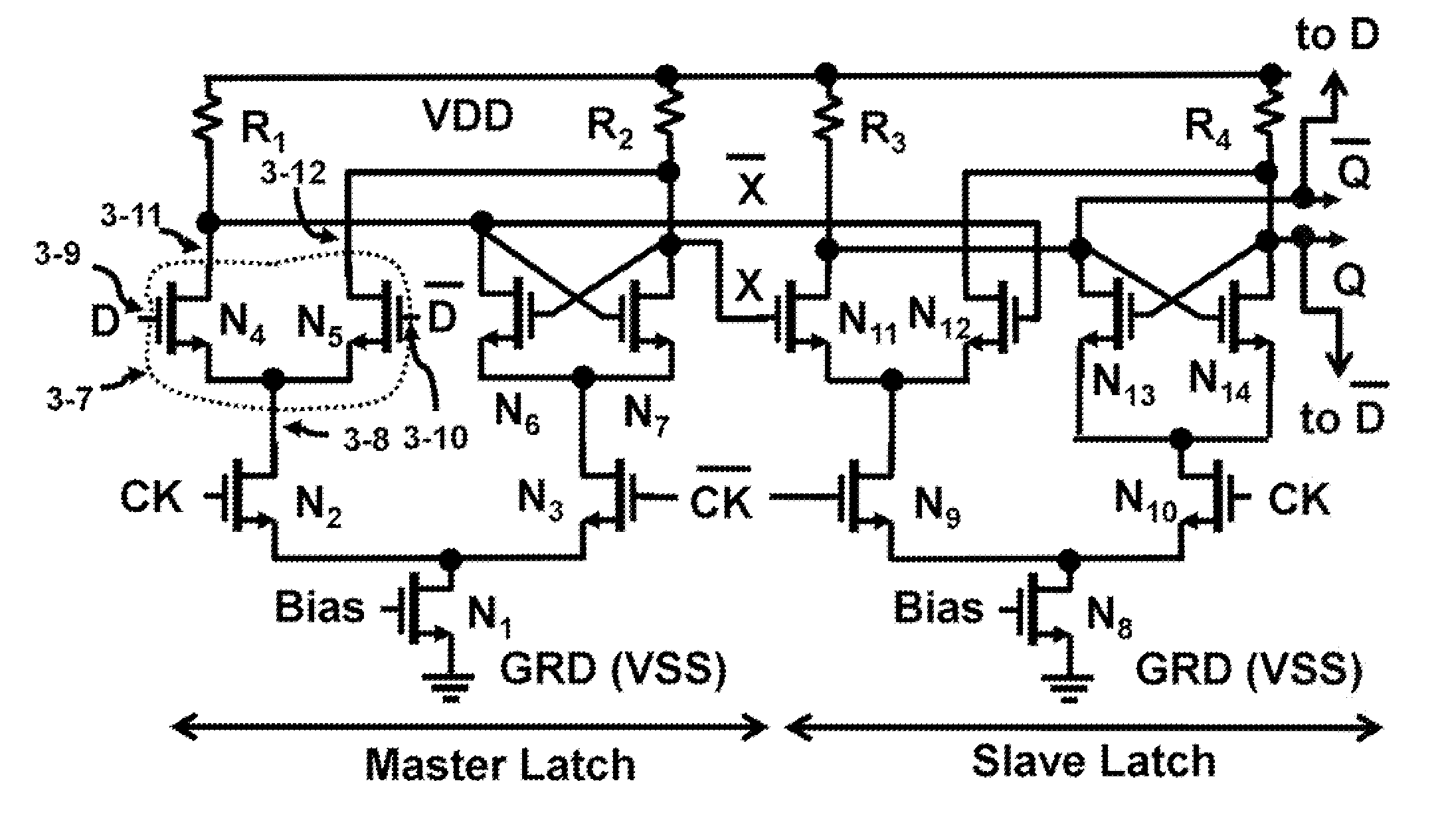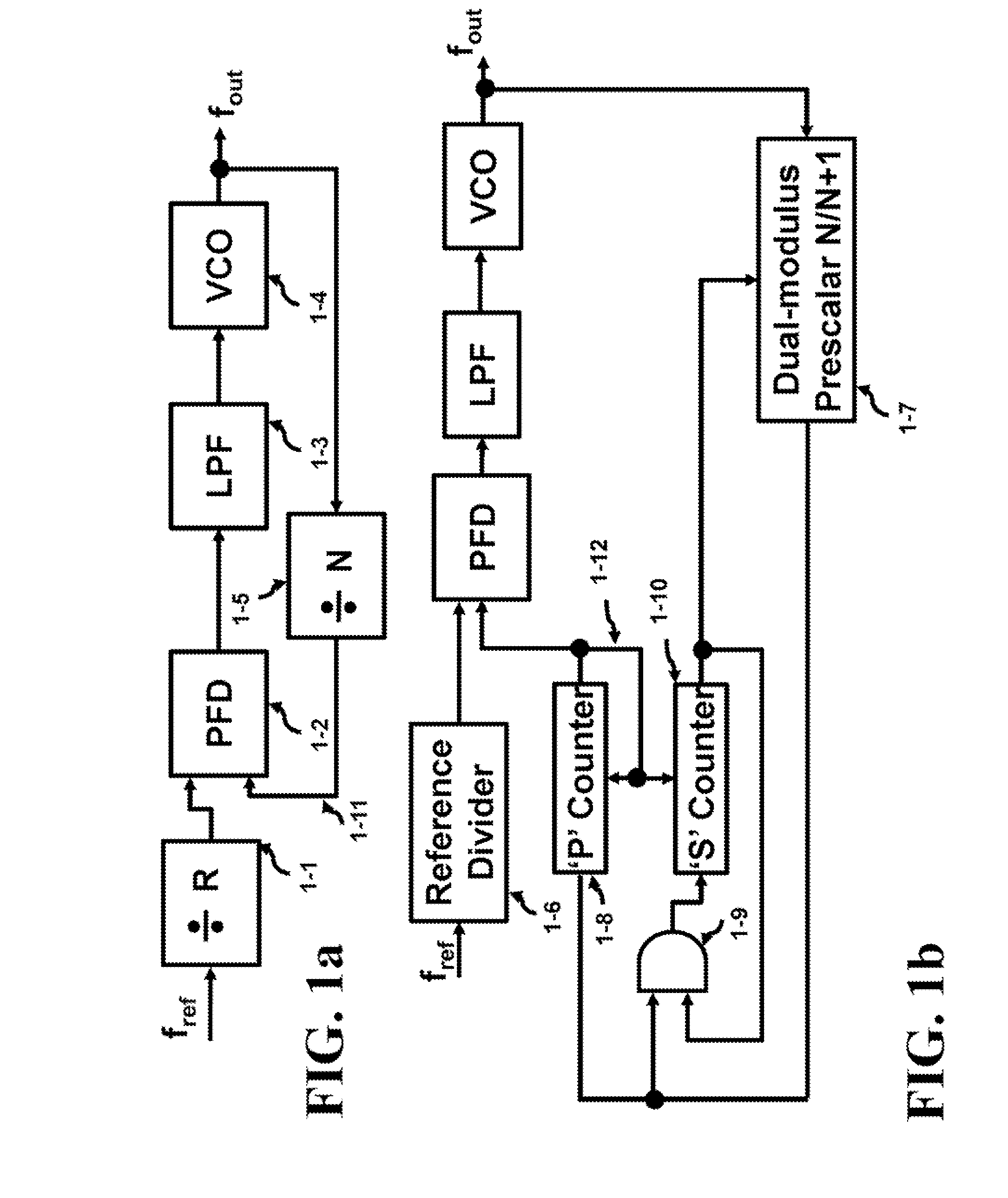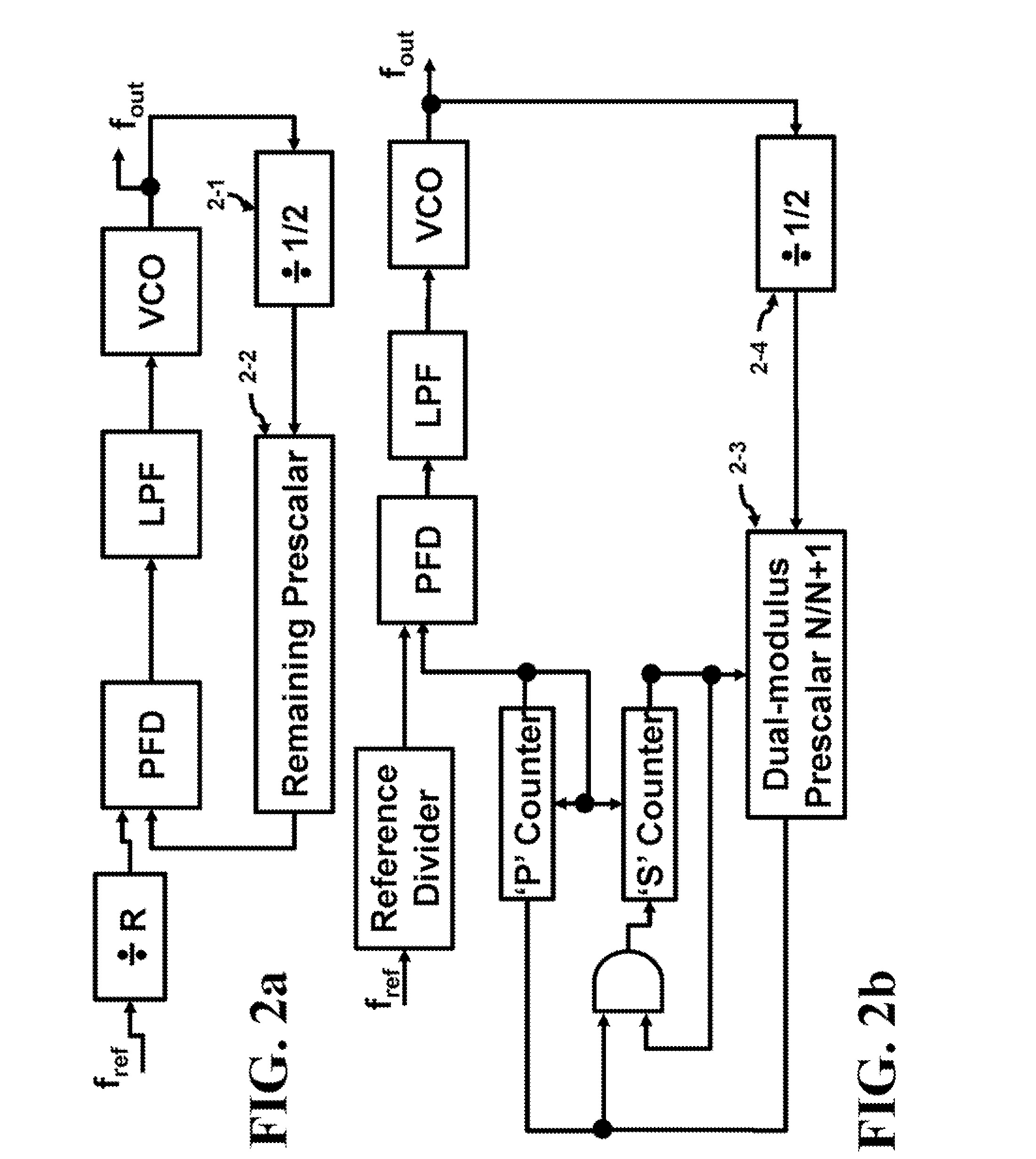High Performance Divider Using Feed Forward, Clock Amplification and Series Peaking Inductors
a technology of high-performance dividers and inductors, applied in differential amplifiers, oscillator generators, pulse automatic control, etc., can solve the problems of cmos divide by 2 suffering from rc delay, difficult design of high-performance systems in low-power supply integrated circuits, etc., to increase the dynamic range of applied signals, increase the headroom of differential amplifiers, and reduce the voltage headroom of analog integrated circuits
- Summary
- Abstract
- Description
- Claims
- Application Information
AI Technical Summary
Benefits of technology
Problems solved by technology
Method used
Image
Examples
Embodiment Construction
[0034]The inventions presented in this specification can be used in high frequency system designs. Several embodiments are presented where any combination of these embodiments can be included into the circuit design. Although a divide by 2 is illustrated as benefiting from these techniques, these techniques can also be applied to other high speed circuits.
[0035]FIG. 1a illustrates a conventional PLL. The reference frequency from a crystal of fref is divided down by the divide by R block 1-1. The low frequency signal is compared in the PDF (Phase and Frequency Detector) against the variable clock signal 1-11. The VCO 1-4 generates the high frequency signal fout. This signal is presented to the prescalar 1-5 and is divided by N and compared against a reference signal in the PFD block 1-2. The output of the PFD is low pass filtered (LPF 1-3) to generate a DC voltage that is applied to the VCO to adjust the high frequency signal fout.
[0036]In FIG. 1b, a dual modulus prescalar is present...
PUM
 Login to View More
Login to View More Abstract
Description
Claims
Application Information
 Login to View More
Login to View More - R&D
- Intellectual Property
- Life Sciences
- Materials
- Tech Scout
- Unparalleled Data Quality
- Higher Quality Content
- 60% Fewer Hallucinations
Browse by: Latest US Patents, China's latest patents, Technical Efficacy Thesaurus, Application Domain, Technology Topic, Popular Technical Reports.
© 2025 PatSnap. All rights reserved.Legal|Privacy policy|Modern Slavery Act Transparency Statement|Sitemap|About US| Contact US: help@patsnap.com



